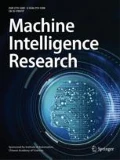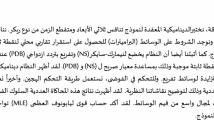Abstract
The objective of this paper is to study systematically the dynamics and control strategy of a singular biological economic model that is described by a differential-algebraic equation. It is shown that when the economic profit passes through zero, this model exhibits the transcritical bifurcation, the Hopf bifurcation, and the limit cycle. In particular, the system undergoes the singularity induced bifurcation at the positive equilibrium, which can result in impulse. Then, state feedback controllers closer to the actual control strategies are designed to eliminate the unexpected singularity induced bifurcation and stabilize the positive equilibrium under the positive profit. Finally, numerical simulations verify the results and illustrate the effectiveness of the controllers. Also, the model with positive economic profit is shown numerically to have different dynamics.
Similar content being viewed by others
References
J. K. Wang. Analysis of the periodic Volterra predatorprey model with undercrowding effect. Annals of Differential Equations, vol. 14, no. 1, pp. 68–73, 1998.
J. K. Wang. The mathematical behavior of a nonautonomous Volterra predator-prey system with undercrowding effect. Annals of Differential Equations, vol. 14, no. 2, pp. 307–312, 1998.
B. D. Qu. Game modeling research for urbanization and epidemic control. International Journal of Automation and Computing, vol. 2, no. 1, pp. 13–19, 2005.
H. Liu. Development and application of a marine ecosystem dynamic model. International Journal of Automation and Computing, vol. 8, no. 2, pp. 154–160, 2011.
E. Kuno. Mathematical models for predator-prey interaction. Advances in Ecological Research, vol. 16, no. 2, pp. 252–261, 1987.
J. A. Cui, L. S. Chen. Mathematical research of the system with functional response and undercrowding effect. Journal of Engineering Mathematics, vol. 12, no. 1, pp. 27–36, 1995. (in Chinese)
P. Y. Liu, Q. L. Zhang, X. G. Yang, L. Yang. Passivity and optimal control of descriptor biological complex systems. IEEE Transactions on Automatic Control, vol. 53, special issue, pp. 122–125, 2008.
X. Zhang, Q. L. Zhang, Y. Zhang. Bifurcations of a class of singular biological economic models. Chaos, Solitons & Fractals, vol. 40, no. 3, pp. 1309–1318, 2009.
C. Liu, Q. L. Zhang, Y. Zhang, X. D. Duan. Bifurcation and control in a differential-algebraic harvested prey-predator model with stage structure for predator. International Journal of Bifurcation and Chaos, vol. 18, no. 10, pp. 3159–3168, 2008.
Y. Zhang, Q. L. Zhang, L. C. Zhao. Bifurcations and control in singular biological economic model with stage structure. Journal of Systems Engineering, vol. 22, no. 3, pp. 233–238, 2007. (in Chinese)
H. S. Gordon. The economic theory of a common property resource: The fishery. Journal of Political Economy, vol. 62, no. 2, pp. 124–142, 1954.
J. Guckenheimer, P. Holmes. Nonlinear Oscillations, Dynamical Systems, and Bifurcations of Vector Fields, New York, USA: Springer-Verlag, pp. 117–165, 1983.
Q. S. Lu. The Bifurcation Theories and Analytical Ways of Ordinary Differential Equation, Beijing, PRC: Aeronautics and Astronautics University of Beijing Press, pp. 273–325, 1989. (in Chinese)
J. Y. Zhang. The Ordinary Equation Geometry Theory and Bifurcation Problem, Beijing, PRC: Peking University Press, pp. 38–64, 1981. (in Chinese)
R. E. Beardmore. The singularity-induced bifurcation and its Kronecker normal form. SIAM Journal of Matrix Analysis and Applications, vol. 23, no. 1, pp. 126–137, 2001.
V. Venkatasubramanian, H. Schattler, J. Zaborszky. Local bifurcations and feasibility regions in differential-algebraic systems. IEEE Transactions on Automatic Control, vol. 40, no. 12, pp. 1992–2013, 1995.
D. M. Xiao, S. G. Ruan. Bogdanov-takens bifurcations in predator-prey systems with constant rate harvesting. Fields Institute Communications, vol. 21, pp. 493–506, 1999.
Author information
Authors and Affiliations
Corresponding author
Additional information
This work was supported by National Natural Science Foundation of China (No. 60974004) and Science Foundation of Ministry of Housing and Urban-Rural Development (No. 2011-K5-31).
Ning Li received the B. Sc. and M. Sc. degrees in mathematics from Liaoning Normal University, PRC in 2001 and 2004, respectively, and the Ph.D. degree in control theory and control engineering from Northeastern University, PRC in 2010. Her research interests include bifurcations, chaos and the control in biological systems, and complex networks.
Hai-Yi Sun received the M. Sc. degree in operational research and cybernetics from Northeastern University, PRC in 2006, and the Ph.D. degree in control theory and control engineering from Northeastern University, PRC in 2011. He is an associate professor of Shenyang Jianzhu University. His research interests include synchronization of chaos and complex networks.
Qing-Ling Zhang received the B. Sc. and M. Sc. degrees from the Mathematics Department and the Ph.D. degree from the Automatic Control Department of Northeastern University, PRC in 1982, 1986, and 1995, respectively. He is a professor of Northeastern University, PRC and a member of the University Teaching Advisory Committee of National Ministry of Education. His research interests include chaos control, robust control, networked control system, and singular system.
Rights and permissions
About this article
Cite this article
Li, N., Sun, HY. & Zhang, QL. The dynamics and bifurcation control of a singular biological economic model. Int. J. Autom. Comput. 9, 1–7 (2012). https://doi.org/10.1007/s11633-012-0609-5
Received:
Revised:
Published:
Issue Date:
DOI: https://doi.org/10.1007/s11633-012-0609-5




